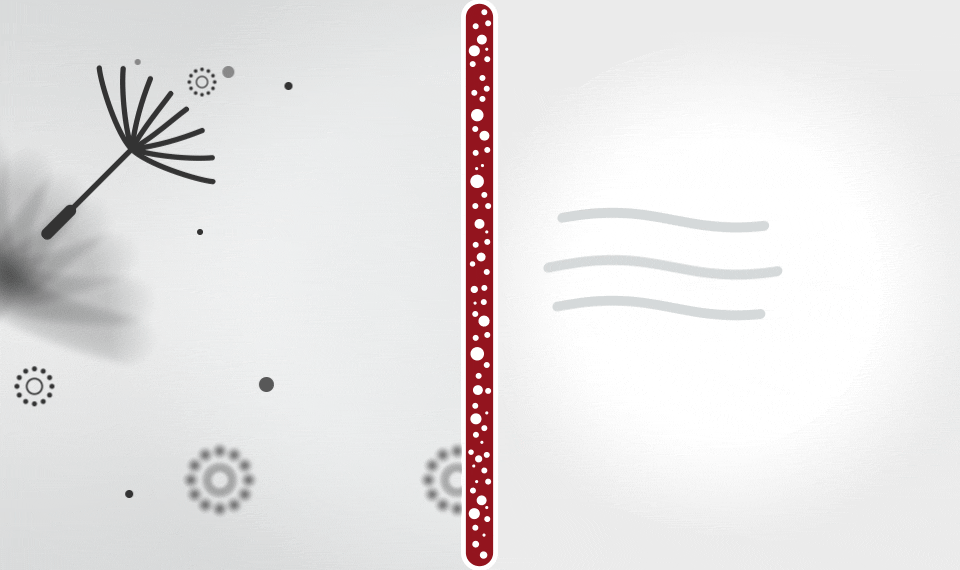Air Filters / Filtration Medium
The air we know is often not just ‘air’, but a swirling mix of various gases, particles, liquids, tiny microbial organisms and other organic matter. A whole range of local and wide environmental factors determine the quality of the air we breathe, from disasters like bush or factory fires, to airborne dust, to more everyday pollen or road traffic pollutants these particles, including dust, soot and pollen, are known as ‘Particulate Matter’. PM can have far reaching impact on breath quality and general respiratory health. Particulate Matter less than 10 micrometres in diameter can also enter the body via the lungs and end up in the blood stream. An ideal air, known as standard dry air without pollutants other particles and at sea level pressure is made up of 21% oxygen, 78% nitrogen and a remaining 1% combination of mostly argon, carbon dioxide and methane. From this ideal air quality can be severely degraded by airborne pollutants & particles. By removing the PM air nasties, filtration can beneficial for a number of respiratory health issues — asthma or allergy sufferers particularly notice immediate benefits, an air mix without pollens or allergens. The quality of this mix, more life-giving oxygen and less of the other stuff, is where air filters and filtration come to play.

Air filters are your number one defence against airborne nasties. Charged with removing unhealthy particles from outside air before they can reach your home or office space and letting in plenty of the circulated (filtered) good stuff.
Different types of filtration will have different effects on making the air you breathe at home or office pollutant free and mountain fresh. Making sense of air filtration mediums can be tricky. To make it easy, follow the ISO standard. For the new ISO standard (replacing the outdated EN779), ventilation filters are grouped by PM1, PM2.5 and PM10 and PM coarse. PM of course stands for our friend Particulant Matter.
To be rated at each level filters must capture at least 50% of the particle size for that level.
Eg. A PM10 must capture at least ≥ 50% of Particulate Matter.
Premium ventilation units also have two stage filtration for most efficient results. Made up of a coarse layer — often sponge-like — to catch larger particles (which in some models can be washed and reused rather than replaced) and a fine filtration layer which removes smaller (micro) particles missed by the coarse filtration. Coarse filtration sorts out larger particles before they can even reach the finer (often fancier) membrane filter and improves the effectiveness, so it is not overworked or clogged up quickly.
A good quality filtration system controller will let you know when to change filters, but as a general rule air filters should be replaced at least twice a year or as required by your local environmental factors (if it has been a particularly bad fire/pollen season might be due a change). An air filter change is easy to do, just follow your manufacturer’s instructions to access air filters and replace them.
You can purchase replacement filters for STIEBEL ELTRON ventilation units online.
